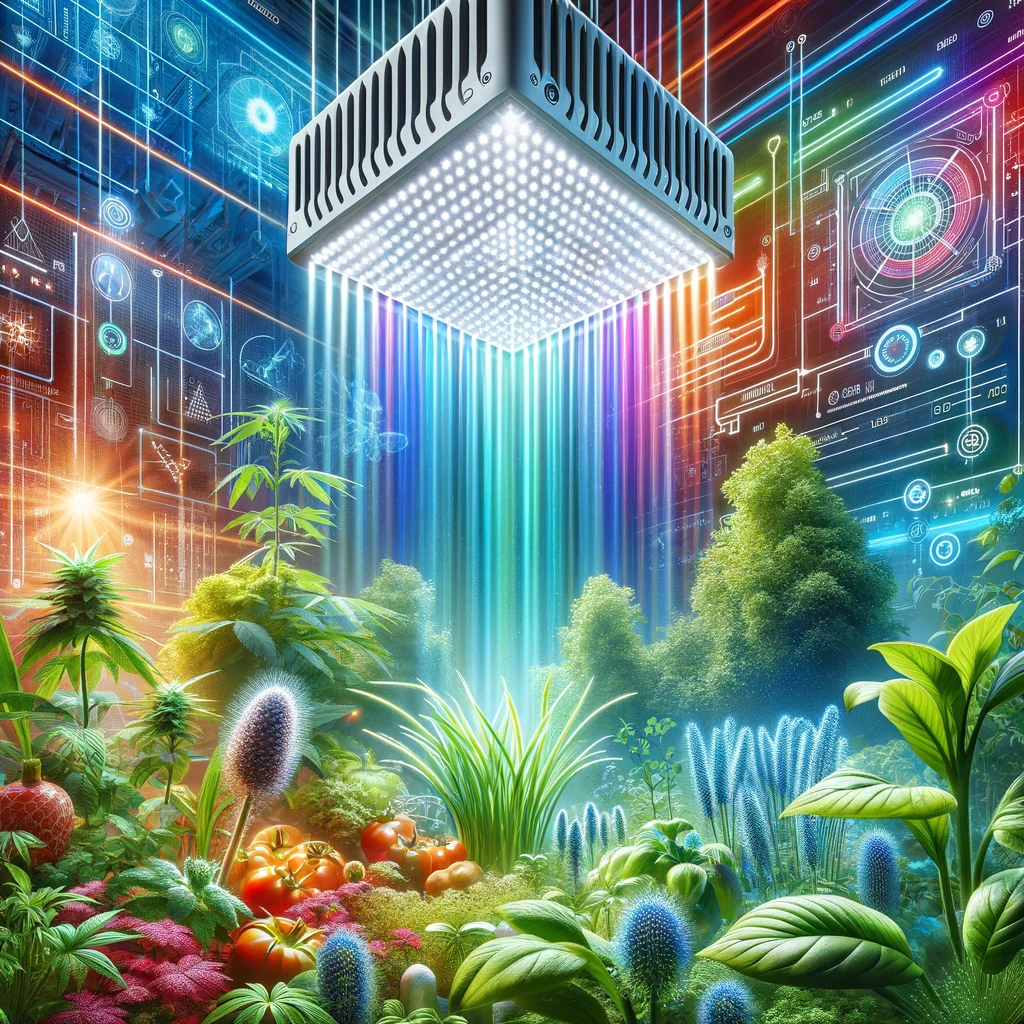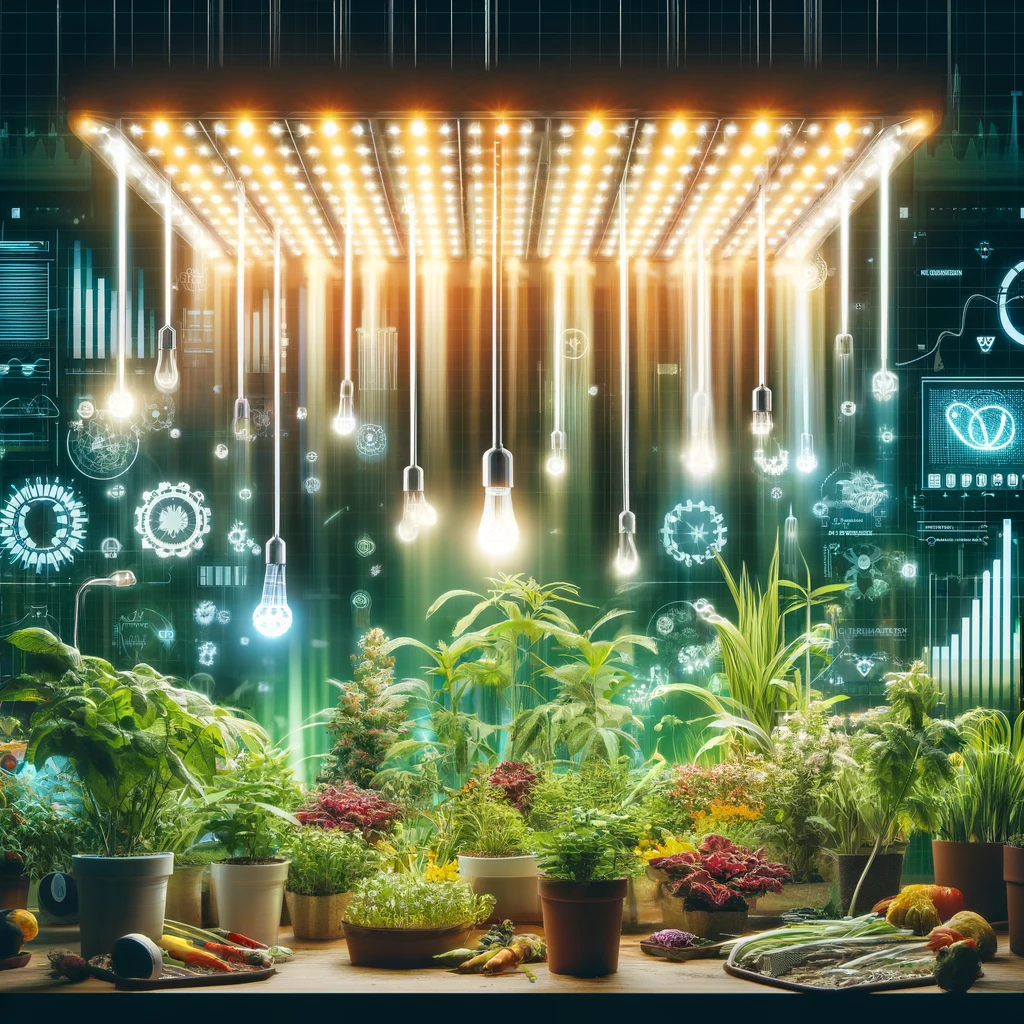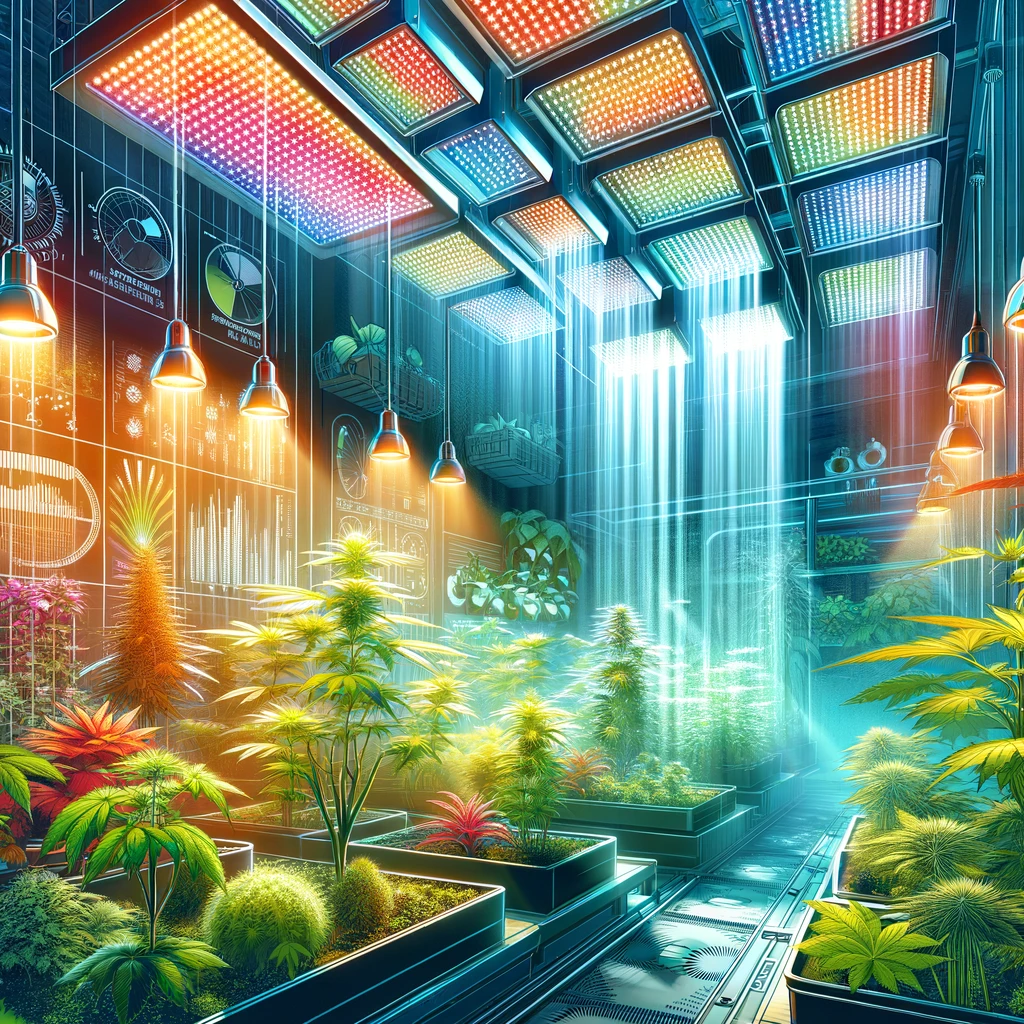Introduction
You’ve seen them on TV screens, clocks, traffic lights, indicator lights on your phone that tell you the battery’s empty… LEDs. You can just as well think of them as teeny tiny light bulbs, only they don’t have a filament (that wire-thingy in the middle).
We could talk all day about the differences between the LEDs and incandescent lights in general, but as far as indoor growing, LEDs blow all other lights out of the water. They run far cooler (though they do need heat sinks), have better power-efficiency and they recreate sunlight more effectively.
They’re not without flaws, though (higher price pops to mind), and another, more technical issue. However, before we get to that, we need to cover the basics of LEDs – or Light Emitting Diodes.

How Do LED Grow Lights Work?
To answer this question, we first need to know what LEDs are. So, what are diodes? Well, here’s where things get a little bit technical.
Diodes are what the community calls semiconductor devices, this means that they only conduct electricity under certain conditions. Ideally an atom would bond to its neighbor without leaving spare electrons, but we don’t want ideal conditions. That’s why diodes are “doped” – in other words, impurities are added to the semiconducting material.
There are two ways you can do this – adding electrons (doping germanium crystals with arsenic) or adding “holes” for electrons to go through (doping germanium crystals with indium). These are called an N-type and a P-type material, aka anodes and cathodes for those who paid attention in physics through elementary. Working together, these encourage the electricity to flow through the diode.
In a stasis, all the electrons are busy filling up the holes, and all the holes are filled up, so that the zone between the two materials (N-type and P-type), aka depletion zone, effectively acts as a buffer, or a dead zone, if you will. How to liven up the situation? Easy, just put some voltage through. Now, it’s imperative that the N-type (anode) is connected to the negative end of the electric circuit, and the P-type (cathode) to the positive one.
This is where the magic happens. As the electrons travel through the depletion zone, they become excited and pass through the holes to either lower or higher orbital (energy levels, essentially). These jumps release a form of energy which you might recognize as photons. The rule of thumb here says the greater the jump, the greater the energy, and the greater the energy, the brighter the light.

Why LED Grow Lights Are Superior
On a more serious note, though, LEDs have a spectrum of colors far superior to that of incandescent or other kinds of light bulbs, which makes them so well suited for indoor growing. They range from near-ultraviolet, through the entire visible spectrum, to infrared and white LEDs.
So far, we know for a fact that reds do affect plant growth, but if you feed your plants only the red side of the spectrum, you get stunty growth. On the other hand, blues and greens encourage growth, but they’re virtually useless during blooming when reds come to the fore.
The other advantages of LED grow lights are numerous. They are incredibly energy-efficient, using significantly less electric than normal grow lights while providing the same amount of usable light. Furthermore, they emit much less heat, reducing the risk of plant damage and the need for elaborate cooling systems. Perhaps most importantly, LED grow lights offer customizable light spectrum, allowing growers to tailor the lighting to the specific needs of their plants, improving growth rates and yield.

Practical Tips for Using LED Grow Lights
Successfully deploying LED grow lights requires consideration of several factors. The right intensity and spectrum of light will vary depending on the strain and growth stage. Correct placement ensures even light distribution, while the duration of exposure must mimic the natural day-night cycle as closely as possible. Regular maintenance, including cleaning and checking for damaged LEDs, will ensure your grow light continues to operate efficiently for many years to come.
The Future of LED Grow Lights
The future of LED grow light industry is bright, with constant research focusing on improving efficiency and light quality. Integration with smart technology is also on the horizon, allowing for automated adjustments based on plant growth stages or environmental conditions. As these advancements continue, LED grow lights are set to play a crucial role in the future of cannabis growing.
In Conclusion
LED grow lights represent a big leap forward in the quest to replicate the sun’s nurturing glow indoors. Their efficiency, along with the ability to customize light spectra, makes them an invaluable tool for anyone looking to improve their indoor grows. As technology advances, the potential of LED grow lights to transform indoor cannabis growing completely.
Grow Your Social Media Presence
